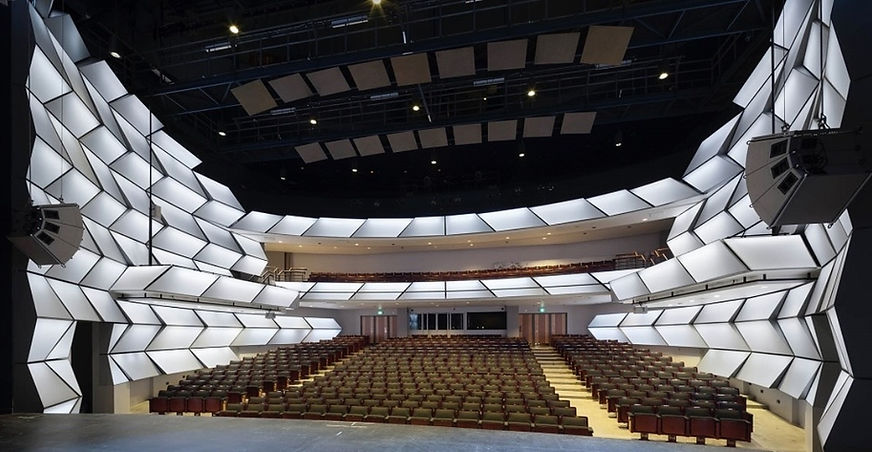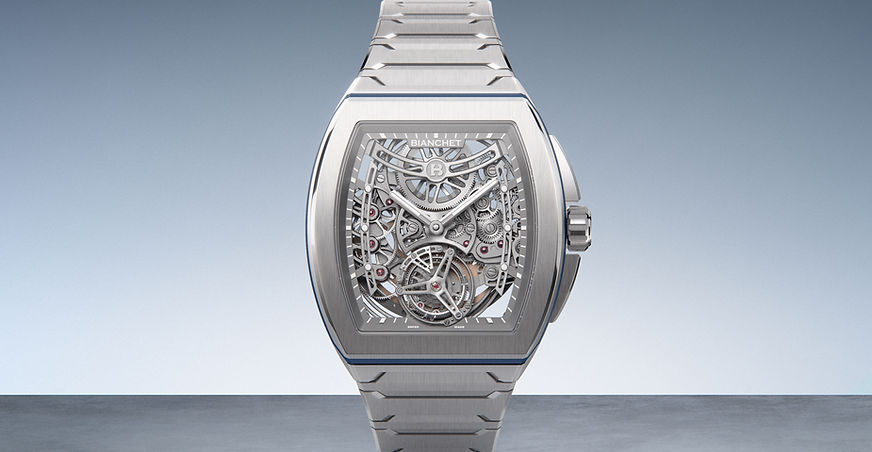
Timepiece World Awards
The Timepiece World Awards: A Window Into the Current State of Horology
Jason Hutton’s second Toronto Timepiece Show will be taking place next week, September 19, 20, and 21, 2025 at the Meridian Arts Center. Within just a year, the show went from being a first of its kind in Canada (the first edition was in September 2024) to one of the most recognized and known watch shows in the world, alongside its West Coast sibling, the Vancouver Timepiece Show. It is impressive to see how much transformation Jason has brought to the shows in such a small timeframe, though it should be acknowledged that the creation of the first event last September required a full year of preparation, hundreds of in-person and virtual meetings, visiting various shows around the world to spread the word about it and enlist the first brands to partake in this massive enterprise. And what is even more impressive is the fact that this year, so in its second year, the Toronto Timepiece Show will also be where an award ceremony will be taking place, another mammoth of an undertaking created to celebrate the diversity, creativity, and ingenuity of the world’s watch brands.

What is the Timepiece World Awards
Created to exist in parallel to the Toronto Watch Fair, the Timepiece World Awards is the first of its kind in Canada and consists of 11 categories for which brands submitted a total of 185 entries from 19 countries, meaning that a plethora of brands and models entered and that one brand could be featured in more than one category. A 36-member Committee (29 Committee Members + 7 Jurors) casted their votes to shorten the entries to six finalists in each category, so 66 in total. (There exists a 12th category called the People’s Choice Award which we will touch upon later on.) The Committee is composed of a diverse group of industry folks who have made noticeable contributions to the global watch world, from brand owners and watchmakers to veteran journalists and influencers, spanning multiple countries and continents, gender, and age. The goal of the Timepiece World Awards, and of its choice for Committee members, was to celebrate what is best about the international watchmaking scene and horological storytelling, its diversity, and profound creativity, outside of the traditional European circuits of such happenings.

The Categories of the Timepiece World Awards
Below is the list of all categories and a brief description of each. (Taken from the Timepiece World Awards’ website.)
Time Only: watches with only two or three hands, bearing exclusively analogue time indications: hours, minutes, seconds. Sub/small seconds function is also acceptable in this category.
Chronograph: mechanical watches comprising at least one chronograph indication. Additional indications and/or complications are admissible.
Sports: watches linked to the world of sport, whose functions, materials and design are suited to physical exercise.
GMT/Worldtime Watches: watches that display hours, minutes, seconds and have the ability to show time in another time zone or multiple time zones through mechanical function. A 12 hour rotating bezel does not qualify for this category.
Tool Watches: watches designed to be utilized within a specific profession or provide timekeeping within more extreme or challenging environments and professional roles. This may include fields but not limited to military and law enforcement professions, diving, emergency services, aviation, medicine and any challenging environments where a timepiece can support their wearers respective role.
Innovative Complication: watches that are remarkable in terms of their mechanical creativity and complexity. These watches may feature all kinds of classic and/or innovative complications and indications. Watches may exhibit a combination of novel or remarkable mechanical construction as well as innovative means of display and measurement of time within the overall design of the timepiece. This may also include a striking or any other acoustic function, a special or novel escapement, novel driven movements or comprising another original and/or exceptional horological concept.
Exceptional Materials: watches utilizing novel or innovative usage of materials in their overall design and construction of the watch. This may include commonly used materials presented or finished in a unique manner or novel materials not commonly seen in timepiece construction and design.
Jewellery and Artistic Craft: watches demonstrating exceptional mastery of the art of jewellery and gem setting including the choice of stones. Timepieces may also include within the design creative execution of enamelling, skeletonization work, enamelling, lacquering engraving and guilloché.
Foundation: watches with a retail price equal to or under $2,500 US dollars or equivalent.
Exception: watches with a retail price between $2,501 USD and 15,000 USD or equivalent.
Pinnacle: watches with a retail price of $15,000 USD or equivalent and upwards.

What This Event Means
Already by looking at the 11 categories that were created for this award, we can see that Jason and his team had a pretty good understanding of the diversity of the watch world as it stands today, as brands, micro and independent, have managed to push the barriers of what can be done in all directions. Now we don’t only get amazed by a new hairspring or tourbillon, but by the renaissance of certain genre of watches, by the research and development of new materials, by the re-flourishing of artistic disciplines as they relate to horology, and by the invention of new ways to display time in various ways, in different time zones, and with different visual vocabulary. For a very long time, many people thought that micro and independent brands were merely copying what other, more established brands created, dumbing things down and making them on the cheap. But now it is clear that a majority of brands so described do much more and can do it at various price points.
When I spoke to Jason about the Timepiece World Awards, he shared that his goal was to celebrate the diversity and creativity of today’s watch world, speaking about brands and those who speak about them, not only in the traditional centers of horology but also anywhere in the world, as watchmaking is popular again and isn’t constrained by any borders or bodies of water. And both the Committee selection and the 185 entries that were submitted for the awards show testify of this burgeoning and limitless creativity, which once again can be found at any end of the price spectrum, which is reflected also in the three last jury categories—Foundation, Exception, and Pinnacle. Moreover, just like the Committee and Jury members were selected to display a broad and diverse sample of the independent watch world, it turned out that the brands which made submissions to enter the contest were equally diverse. And that is an adjective which also applies to the roster of brands which exhibit at the two fairs.

Overview of the Finalists
With a few exceptions, most brands which made it to the finals are what we can best describe as being micro and independent brands, meaning brands which aren’t part of any group or consortium, regardless of how many watches they produce each year and at what price. (Here we’re talking about their independent structure and privately owned nature.) Which is why we find a diverse list of brands, from Paulin and Isotope to Brew and Atelier Wen, so from the United Kingdom, France, China, and the United States, with of course a couple of exceptions. Moreover, most of the brands which made it to the finals are widely popular, often talked about in mainstream watch media and present at various watch shows, each known for doing something particularly well, whether it be making solid tool watches or being innovative in the conception of new materials, for example Fortis and Formex respectively, There are but a few brands which might not be as popular, or personally I have never heard of GoS and Fam al Hut.
The latter point proves that not only is it impossible for any of us to know all brands that exist in the world, but that there is so much variety in this particular space that we can discover a new brand each day. This is one of the inherent benefits of the Toronto and VancouverTimepiece Shows and of the Timepiece World Awards, as you might not have heard of Kuoe and of contemporary Japanese watchmaking, of BeauBleu and of the representation of time with circular “hands”, or even of Amida and the re-creation of the first prism-displayed jumping hour complication. So indeed the models that made it to the finals are as diverse as there are brands in the world, and so it is interesting that not only many countries, and therefore so many horological cultures, are represented at the Jason’s shows, but also at the Timepiece World Awards, the latter offering an even broader perspective of what the global watch industry is made out of. In other words, the awards further broadcast the wide-ranging and diversity of today’s watchmaking.


More specifically, the roster of brands represented in this program demonstrates that watchmaking has reached new frontiers, where certain milestones of the past century have been repeated, where certain traditions have been revived, and where creativity is boundless and plentiful. If Jason had made a Timepiece World Awards in the middle of the 1980s, perhaps the entries would have shown some diversity but not to the extent as we see today, as not only do brands experiment with new materials and shapes, but with colors and concepts, blending together some of the most illustrious watchmaking creations of the past many decades with new ideas, often bold ones, from which new concepts and new genres of watches emerge. Which is why amongst the finalists we see a Ressence Type 7 N with its floating dial, an Atelier Wen Perception Millésime 睦 (Mù) with its hand-turned fishscale guilloché dial, an anOrdain Model 2 Porcelain Large A1 and a Schaefer and Companions S-GAEM0A-ANT-03A01’s crumpled silver foil and enamel dial.

Why We Care and Why You Should Too
Shifting the conversation slightly away from the Timepiece World Awards for a moment, and perhaps at the risk of sounding like a broken record, I wanted to once again highlight why Jason’s global work matters (to us at Mainspring) and why you should pay closer attention to it. There are today many watch shows in the world, some say too many, and oftentimes they showcase the same usual suspects, the same “darling” brands watch media cover ad nauseam because they drive the most web and social media traffic. Usually the brand mix at these shows is uniform or, at the other extreme end of the spectrum, a total mess of a thing. But when we combine the roster of brands which will be present at the Toronto Timepiece Show (see here) with the list of brands which partook in the Timepiece World Awards (see here,) we get one of the most diverse group of brands being represented by one organizer of events which truly demonstrates the wild and beautiful diversity of today’s international watch market.
In other words, Jason and team’s hard work not only brought the first show of its kind to Canada, but also the first global celebration of its kind outside of the European continent which makes it possible for all of us to discover and learn about brands and watches as diverse as Isotope, the Atelien Wen Perception, Sherpa, Christopher Ward, Formex and the Essence Ceramica Skeleton 41 COSC, Jack Mason and the Strat-o-timer, the Oris Divers Date, the Micromilspec Milgraph, the BeauBleu Figura, and the Fears Arnos Pewter Blue. Again combined together, the Timepiece Shows and the Timepiece World Awards are the only such combination of events which can celebrate watches that cost a couple hundred dollars and brands whose horological creations cost as much as a suburban home. We support and are big fans of many of the brands Jason managed to bring together within just one year and some months of hard work, and it will be exciting to see what comes next for him and his unique creations in the months and years to come.


The Last Steps and the Award Ceremony
With all of that said, what’s going to happen next? First, the 7-member Jury will be convening on Friday, September 19, 2025, to examine all watches that made it to the finals in each category and in person, in order to select one winner per category. (Brands are required to send one sample of each watch selected as part of the finals to be examined in the metal.) On Saturday, September 20, 2025, the winners will be announced during the evening ceremony, whilst during the day, any show attendee can cast a vote on the 66 models that made it to the finals through the “People’s Choice Award” whose sole winner will also be announced during the evening festivities. Jason went all out with the Timepiece World Awards not only in the creation of the competition but also in setting the rules, committees, and oversight committee, working with a notary and lawyer to insure all is tight and tidy, and going as far as commissioning unique trophees which will go to the winners of each of the 11 categories. The Timepiece World Awards is unique in North America and worth taking a closer look at.
You can learn more about it here. I also recommend the excellent article published on The Calibrated Wrist.
